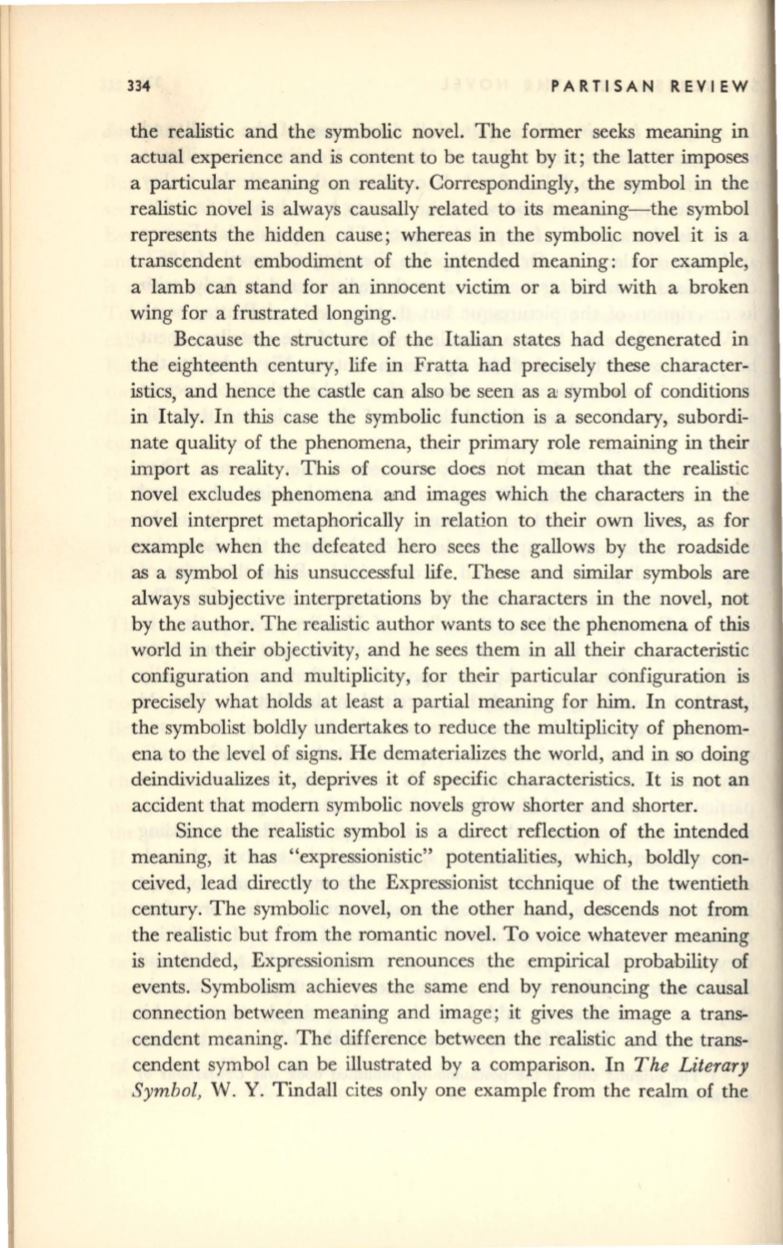
334
PARTISAN REVIEW
the realistic and the symbolic novel. The former seeks meaning in
actual experience and is content to be taught by it; the latter imposes
a particular meaning on reality. Correspondingly, the symbol in the
realistic novel is always causally related to its meaning- the symbol
represents the hidden cause; whereas in the symbolic novel it is a
transcendent embodiment of the intended meaning: for example,
a lamb can stand for an innocent victim or a bird with a broken
wing for a frustrated longing.
Because the structure of the Italian states had degenerated in
the eighteenth century, life in Fratta had precisely these character–
istics, and hence the castle can also be seen as a: symbol of conditions
in Italy. In this case the symbolic function is a secondary, subordi–
nate quality of the phenomena, their primary role remaining in their
import as reality. This of course does not mean that the realistic
novel excludes phenomena and images which the characters in the
novel interpret metaphorically in relation to their own lives, as for
example when the defeated hero sees the gallows by the roadside
as a symbol of his unsuccessful life. These and similar symbols are
always subjective interpretations by the characters in the novel, not
by the author. The realistic author wants to see the phenomena of this
world in their objectivity, and he sees them in all their characteristic
configuration and multiplicity, for their particular configuration is
precisely what holds at least a partial meaning for
him.
In contrast,
the symbolist boldly undertakes to reduce the multiplicity of phenom–
ena to the level of signs. He dema:terializes the world, and in so doing
deindividualizes it, deprives it of specific characteristics. It is not an
accident that modern symbolic novels grow shorter and shorter.
Since the realistic symbol is a direct reflection of the intended
meaning, it has "expressionistic" potentialities, which, boldly con–
ceived, lead directly to the Expressionist technique of the twentieth
century. The symbolic novel, on the other hand, descends not from
the realistic but from the romantic novel. To voice whatever meaning
is intended, Expressionism renounces the empirical proba:bility of
events. Symbolism achieves the same end by renouncing the causal
connection between meaning and image; it gives the image a trans–
cendent meaning. The difference between the realistic and the trans–
cendent symbol can be illustrated by a comparison. In
The Literary
Symbol,
W.
Y.
Tindall cites only one example from the realm of the


